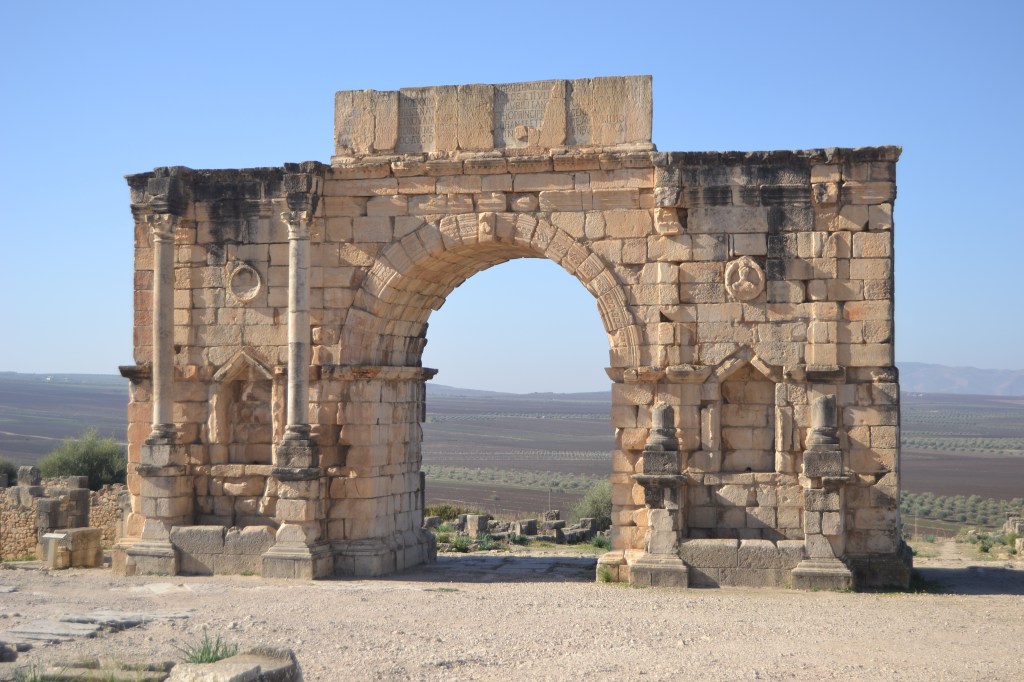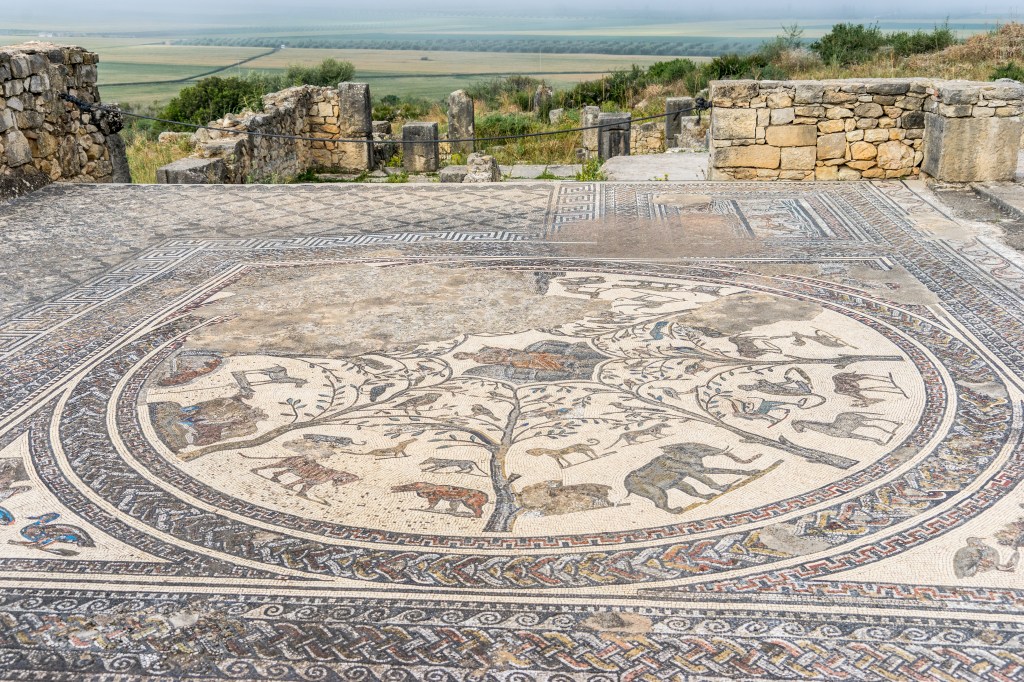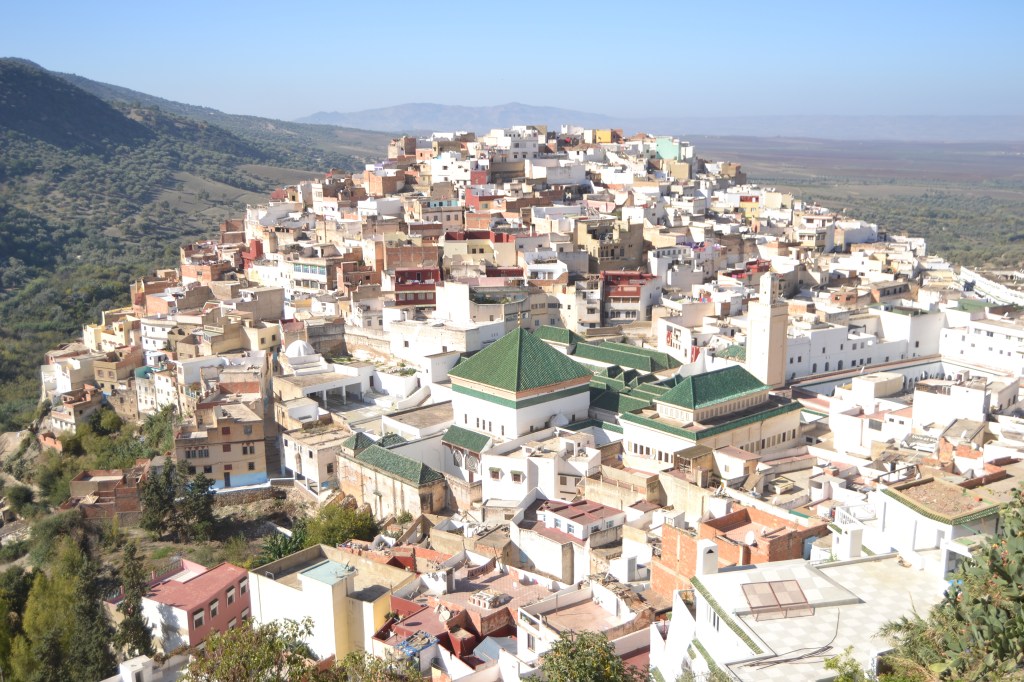It was early in the morning and we headed north to the mountains against the traffic.
Grands taxis careered in the other direction, towards Meknés, so crammed with passengers that they bottomed out over bumps. A man led a donkey along the side of the road. Others walked alone, dressed for work, miles from the nearest settlement.
We swung round a corner and passed a flattened jeep with its wheels in the air and shattered glass all around it. “Oo-la-la,” said the driver, but kept up the speed.
At the height of the Roman Empire, its southern border ran right across the top of North Africa from the Red Sea to the Atlantic. The province of Mauretania Tingitana in what is now Morocco stretched from Tingis (Tangier) in the north to Volubilis in the south, 20 miles or so from Meknés. It was here that Juba II, a Romanized Berber installed on the throne by Caeser Augustus, commissioned the building of a royal city in 25 BCE.
It was already hot in the early morning. The sun dazzled and the sky was deep blue and cloud-free. I had the site to myself at that hour and wandered along the dusty lanes, poked about the ruins and scrambled over rocks and looked across the valley to the mountains.
Volubilis had been abandoned by the fourteenth century. It was ravaged by an earthquake, plundered for stone for building and all but forgotten until the French Colonial period. Excavations began before the First World War and continued after independence. About half of the 40 acre site has been dug out.
Intact mosaic floors have been unearthed in the ruins of villas, the remains of the underfloor heating exposed. A triumphal arch and part of the basilica have been pieced back together. Storks nest at the top of the reassembled columns. There are steps and plinths with Latin inscriptions and what is left of the public baths.
Nestled in the mountains over the valley a few miles to the west is the town of Moulay Idriss. It is named for the founder of Morocco’s first dynasty and contains his mausoleum. It is a place of pilgrimage for Moroccans.
I declined the services of the guides who approached and tried to make my own way through the warren of lanes which thread up to the terraces at the top of the town. But I was surrounded and hassled and, in the end, it was easier to go with a guide: not so much so he could show me round but to keep the rest of the people out of my face.
We threaded between the claustrophobic walls, up flights of steps, round dogleg corners, past scabrous doors and flaking paint and sagging telephone wires and emerged on a terrace which looked down across the green roofs of the mausoleum and the scrum of houses which surround it and extend to the edge and tumble down the side of the hill.
I paid the guide his best and final price and he talked the driver into giving him baksheesh, as well. Then it was back to Meknés and a train the next morning to Rabat.
© Richard Senior 2020





New travels good sir? In this era?
How are you my friend? Surviving I hope
Damian Mckinnon Associate
Professional Indemnity
D +44 20 7280 8877 E 498877 M +44 7912 540687
DWF Law LLP
20 Fenchurch Street London EC3M 3AG
T +44 333 320 2220 F +44 333 320 4440
Hi Damian, hope all good with you. This is from the back catalogue. Not sure when new travels will happen